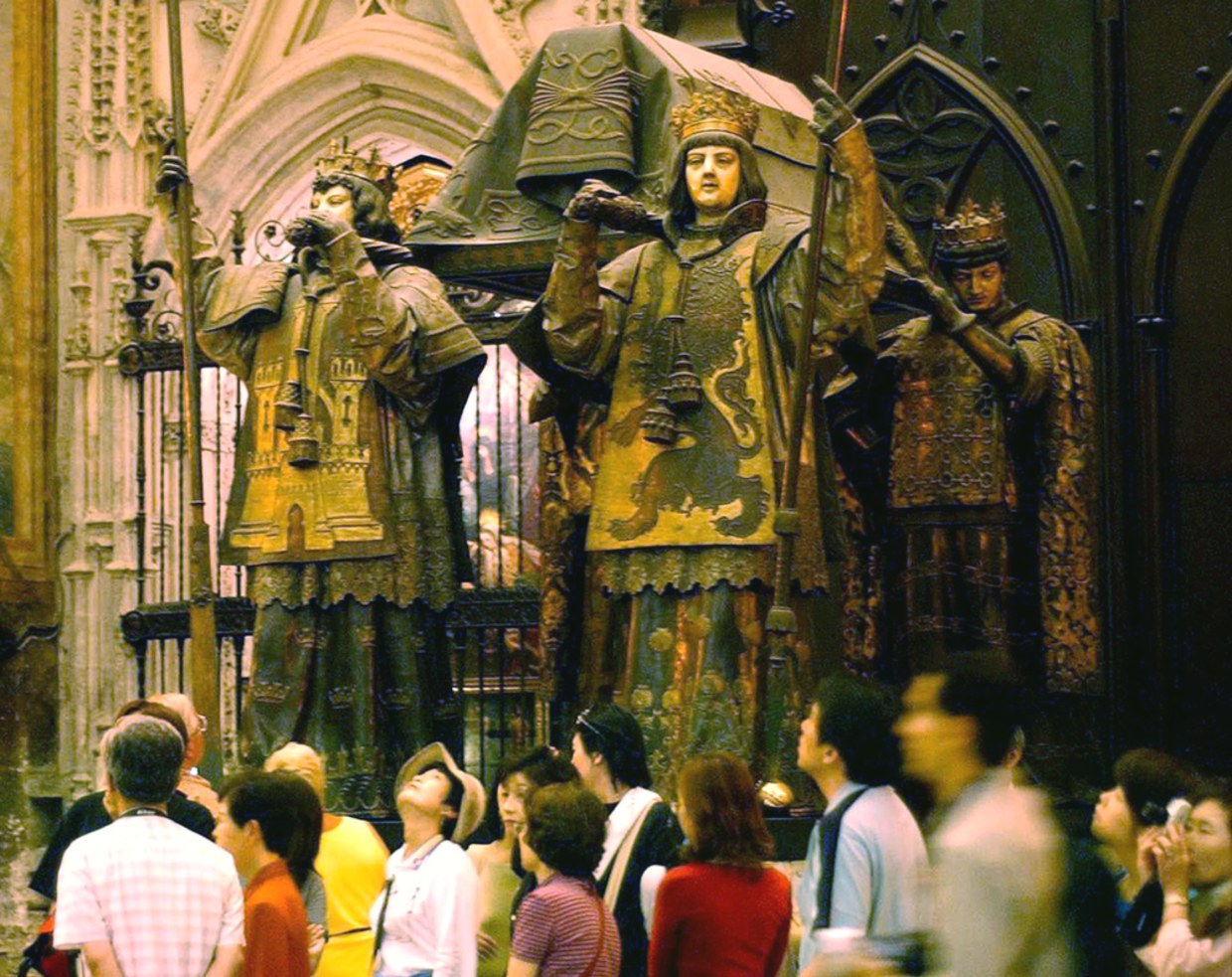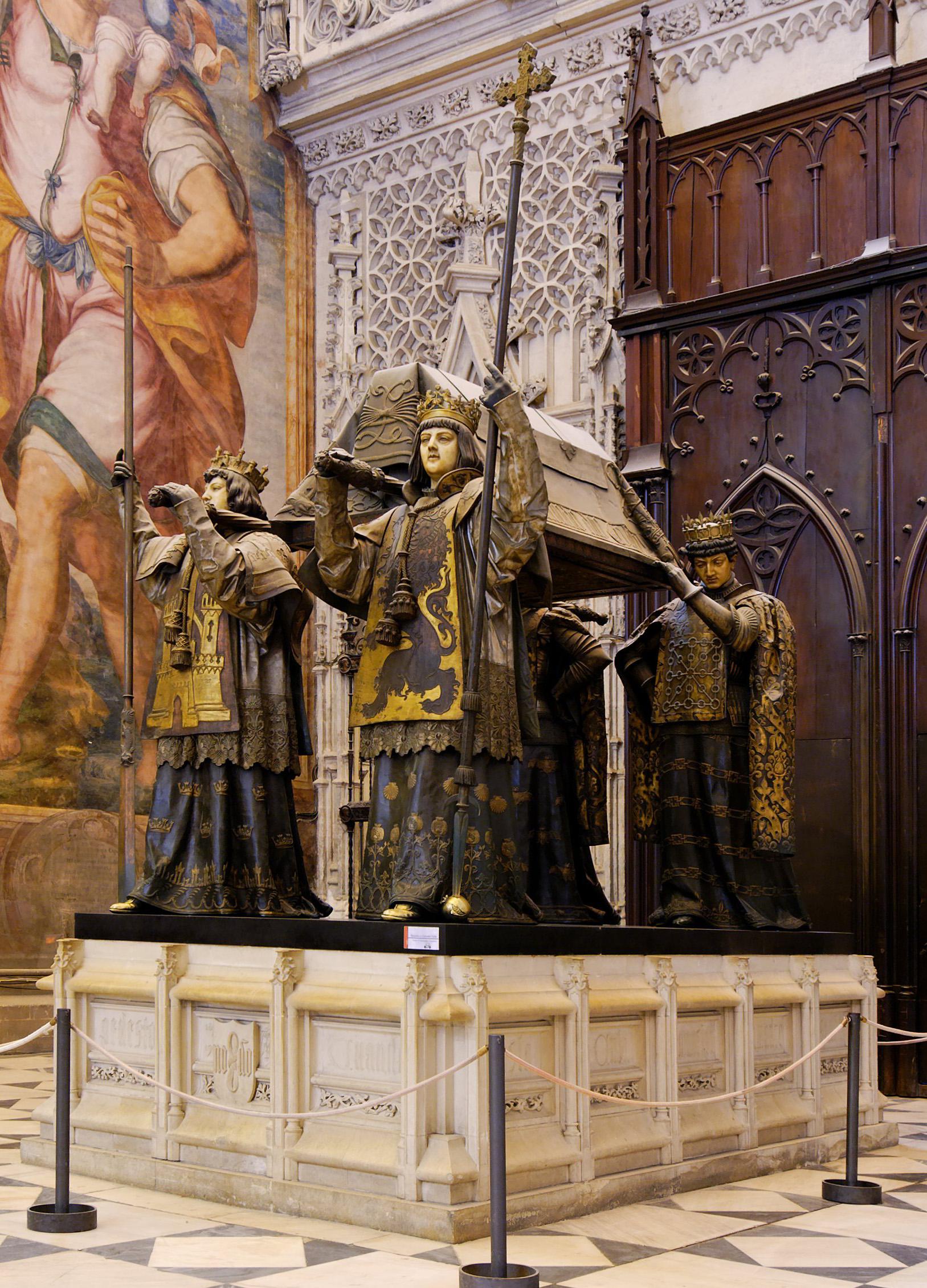Century-old Columbus mystery nearly solved
Both Seville Cathedral and the Columbus Lighthouse claim to be the keepers of the Italian explorer’s remains. In 2006, DNA testing on the bone fragments in Seville confirmed they belonged to Columbus. However, the possibility remains that some of Columbus’s remains are still in Santo Domingo.
Nearly 500 years after the death of Christopher Columbus, a team of genetic researchers are using DNA to solve two nagging mysteries: Where was the explorer really born? And where the devil are his bones?

Debate about origins and final resting place of Columbus has raged for over a century, with historians questioning the traditional theory that he hails from Genoa, Italy. Some say he was a Spanish Jew, a Greek, a Basque or Portuguese.
Even the location of his remains is the subject of controversy. The Dominican Republic and Spain both stake claims as the final resting place of Columbus, who died in May 1506.
The Spanish-led research team, which includes Italians, Americans and Germans, sampled DNA from the known remains from Columbus’ brother and son, and then compared them with fragments attributed to Columbus in Seville.
Although the official announcement is expected later this year, Italian researchers say they are confident based on the evidence gathered so far that Columbus’ supposed remains in Seville are likely authentic.
“We have already started all of the analyses on a molecular level, and we have good indications that the remains in Seville are effectively those of Christopher,” said Olga Rickards, head of the team at Rome’s Tor Vergata University laboratory.

Who’s buried in Columbus’ tomb?
If confirmed, it could lay to rest a dispute dating back to 1877, when Dominican workers found a lead casket buried behind the altar in Santo Domingo’s cathedral containing a collection of bone fragments the country says belong to Columbus.
The bones should have left the island for Cuba in 1795 and then been sent along Spain a century later.
But the casket was inscribed with the words “Illustrious and distinguished male, Don Cristobal Colon” — the Spanish rendering of Christopher Columbus.
“Nobody knows (about the Dominican remains) … because they haven’t yet allowed DNA analysis,” Rickards told Reuters.
Tracing Columbus’ roots
Little is known about the early life of Columbus, the reputed son of a weaver in Genoa who would later change the world by accidentally stumbling upon the Americas in 1492. With so many different theories about his origin, the DNA researchers hope to settle the matter once and for all by obtaining genetic samples from Europeans with the name Columbus.
In Italy, the researchers sent letters to modern-day “Colombo” men asking them to use cotton swabs to sample saliva from inside their mouths. “We sent out 250 letters … and we have already received 16 positive responses,” Rickards told Reuters.

The Spanish had sampled less than 150 people, she said.
“If we’re lucky, we might have a result by May, which is the 500th anniversary of Christopher Columbus’ death,” she said.
Genoa’s mayor, Giuseppe Pericu, joked to a newspaper that Columbus would wind up being “Genovese” — one way or another.
“If it turns out that Columbus wasn’t Genovese, we’ll make him an honorary citizen,” he said.
Related Post
A shocking documentary proves that mermaids do exist
SHOCKING Revelation: Thuya, Mother of Queen Tiye, Was the Grandmother of Akhenaten and Tutankhamun—What Ancient Egyptian Secrets Did She Leave Behind?
Breaking News: Astonishing Discoveries at Karahan Tepe Confirm an Extraterrestrial Civilization is Hiding on Earth, and NO ONE Knows!
Breaking News: Researchers FINALLY Discover U.S. Navy Flight 19 After 75 Years Lost in the Bermuda Triangle!
NASA’s Secret Investigation: Uncovering the Astonishing Mystery of the UFO Crash on the Mountain!
Explosive UFO Docs LEAKED: Startling Proof That Aliens Ruled Ancient Egypt!